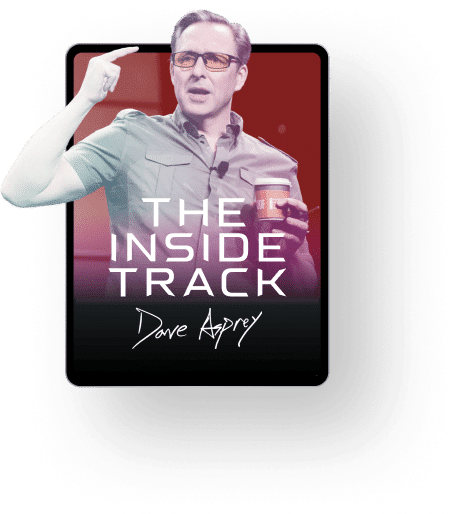Most people hear “nicotine” and think “cigarettes.” But nicotine itself isn’t the villain—it’s the delivery system that causes harm. In my most recent episode of The Human Upgrade, I explain why low-dose nicotine, used occasionally and correctly, can enhance focus, improve brain function, and possibly support longevity.
Let’s separate science from smoke.
What Nicotine Actually Does
Nicotine activates nicotinic acetylcholine receptors (nAChRs)—the same pathways that regulate alertness, learning, and attention. When stimulated in moderation, these receptors can improve cognitive performance.
Studies show that nicotine:
- Increases attention and working memory in healthy adults (PMID: 29110618)
- Improves synaptic signaling and neurotransmitter efficiency (PMC6018192)
- Enhances motor control and reaction time during cognitive tasks
When used intentionally, nicotine acts as a short-term nootropic—a tool that can fine-tune your brain’s performance rather than overstimulate it.
Nicotine and the Brain
Your brain consumes roughly 20 percent of your body’s energy even when you’re at rest. When fatigue, aging, or stress hit, your neurons demand more efficient signaling to stay sharp.
Low-dose nicotine supports neuronal efficiency and neuroplasticity in controlled studies. One 2023 review found nicotine helps attenuate age-related cognitive decline and may boost neurotrophic factors that protect neurons (Frontiers in Neuroscience, 2023).
Another study of adults aged 60–75 found that nicotine enhanced performance in those with lower baseline scores, suggesting it restores cognitive efficiency rather than artificially overstimulating high performers (Frontiers in Aging Neuroscience, 2021).
The takeaway: nicotine doesn’t “boost” everyone equally—it helps fill energy gaps where your brain needs it most.
Nicotine and Longevity
Longevity is about preserving function and maintaining resilience. Emerging data suggests nicotine can influence mitochondrial signaling and neuronal protection when used carefully.
A 2023 Frontiers in Neuroscience paper identified nicotine as a potential modulator of mitochondrial function and neuroinflammation (Frontiers in Neuroscience, 2023).
However, a systematic review from 2020 found inconsistent results and warned that nicotine’s benefits depend on dose, frequency, and user baseline—and that industry-funded studies sometimes overstate results (PMC7271274).
In short: nicotine can play a protective role in theory, but overuse flips that switch. Biohackers should view it as a precision molecule, not a habit.
How I Use Nicotine (and When I Don’t)
This is my personal protocol—not a recommendation for everyone.
When I use it:
- During long writing or recording sessions that demand deep focus
- When crossing time zones and needing alertness without caffeine crashes
- Occasionally, to extend fasting focus
How I dose it:
- Start at 1–2 mg, delivered as a clean lozenge (not smoking or vaping)
- Use for 30–60 minutes max, no more than a few times a week
- Always stay hydrated and avoid stacking with other stimulants
When I skip it:
- On high cardiovascular load days (training, sauna, etc.)
- If I feel jittery or notice any craving
- If I’m using other stimulants or under high stress
The biohacker’s rule applies: use it as a tool, not a crutch.
Myths and Reality Checks
Myth 1: “Nicotine kills brain cells.”
Fact: Smoking does. Pure nicotine, in moderate doses, can enhance cognitive performance and neural signaling (Scientific American, 2017).
Myth 2: “Nicotine is automatically addictive.”
Fact: Addiction risk increases with fast delivery systems like smoking or vaping. Slow, low-dose forms such as lozenges or gum carry lower potential for dependency when used occasionally.
Myth 3: “It’s the same as cigarettes.”
Fact: Nicotine ? tobacco smoke. Cigarettes deliver over 7,000 chemicals. Pure nicotine, used in isolation, has a dramatically different safety profile.
Myth 4: “It gives a caffeine-like jolt.”
Fact: Nicotine provides a focused clarity, not a stimulant surge. Think “tightening the signal,” not “hitting the gas pedal.”
Watch: Nicotine, the Misunderstood Smart Drug
In this YouTube episode, I explain how nicotine works in the brain, why dose and delivery determine safety, and how I use it strategically for cognitive performance and longevity—not addiction.
Watch the full episode: Nicotine: Smart-Drug Potential for Focus, Brain, and Longevity
Bottom Line
Nicotine, stripped of smoke and used in microdoses, has legitimate nootropic and neuroprotective potential. It improves attention, supports brain metabolism, and may even slow certain aspects of cognitive aging.
But like any powerful compound, context and restraint matter. Used occasionally and intentionally, it’s a tool for focus. Used daily or carelessly, it’s a liability.
The difference between biohacking and self-sabotage is precision.
Watch My Nicotine Masterclass Part 1:
References
- Mansvelder HD. Cognitive Effects of Nicotine: Recent Progress. 2018. PMC6018192
- Posner MI. Nicotine and Brain Activation During Working Memory Tasks. PNAS, 2006.
- Echeverria V et al. Nicotine and Its Derivatives in Disorders of Cognition. Frontiers in Neuroscience, 2023.
- Pasetes SV et al. Cognitive Performance Effects of Nicotine and Industry Affiliation: A Systematic Review.Substance Abuse, 2020.
- Min et al. Nicotine and Cognition in Cognitively Normal Older Adults. Frontiers in Aging Neuroscience, 2021.
- Scientific American. “Will a Nicotine Patch Make You Smarter?” 2017.
